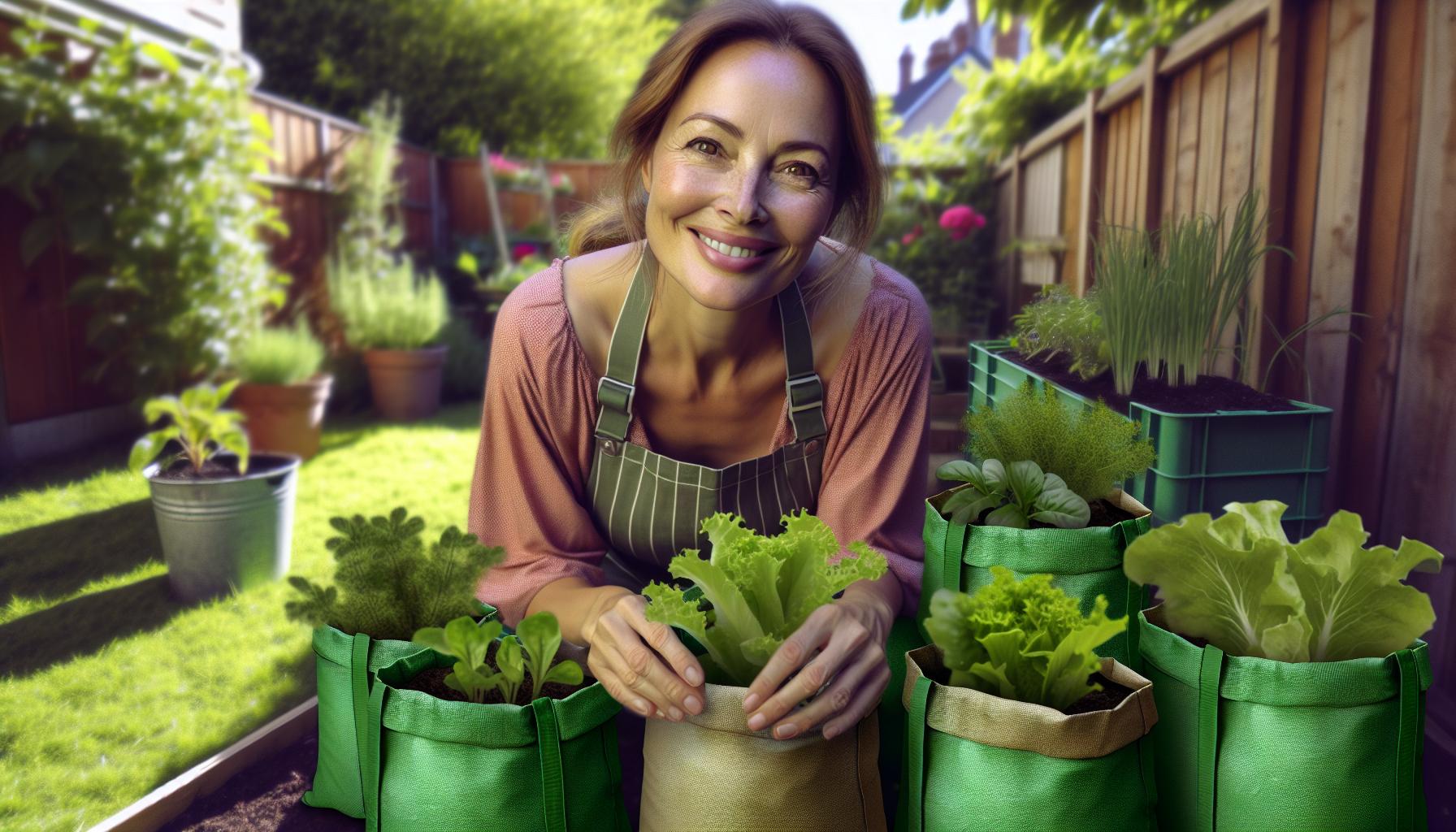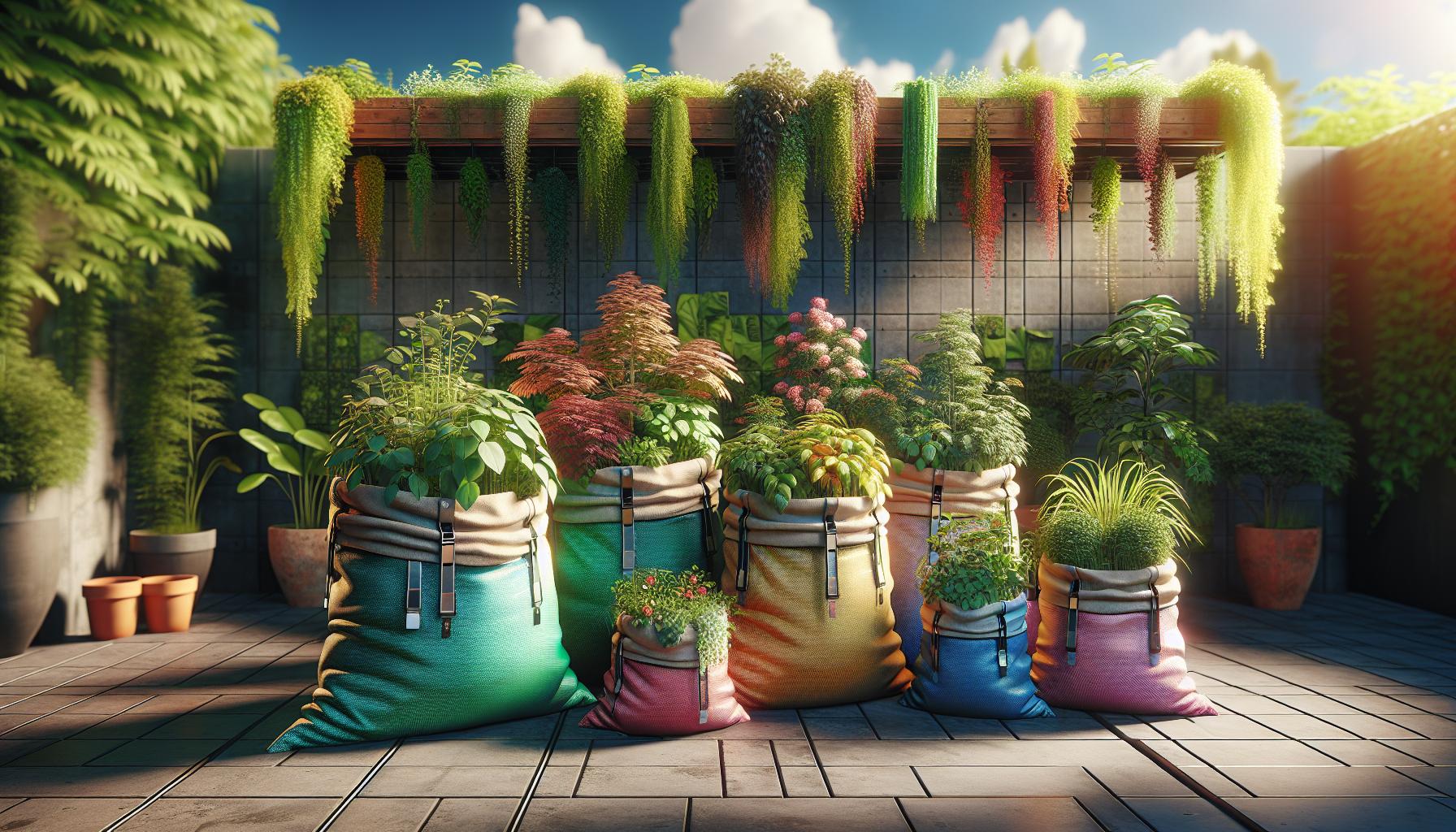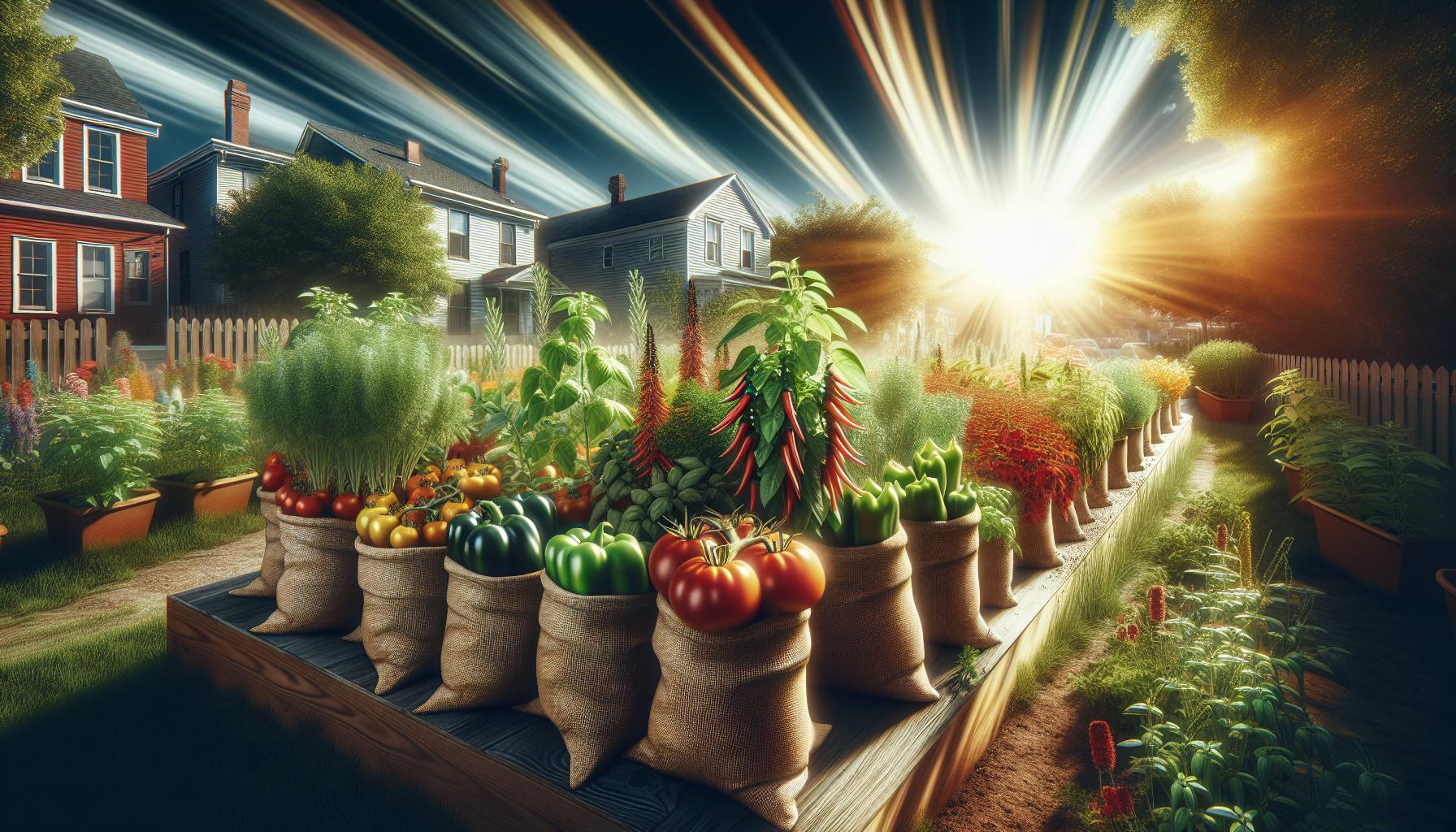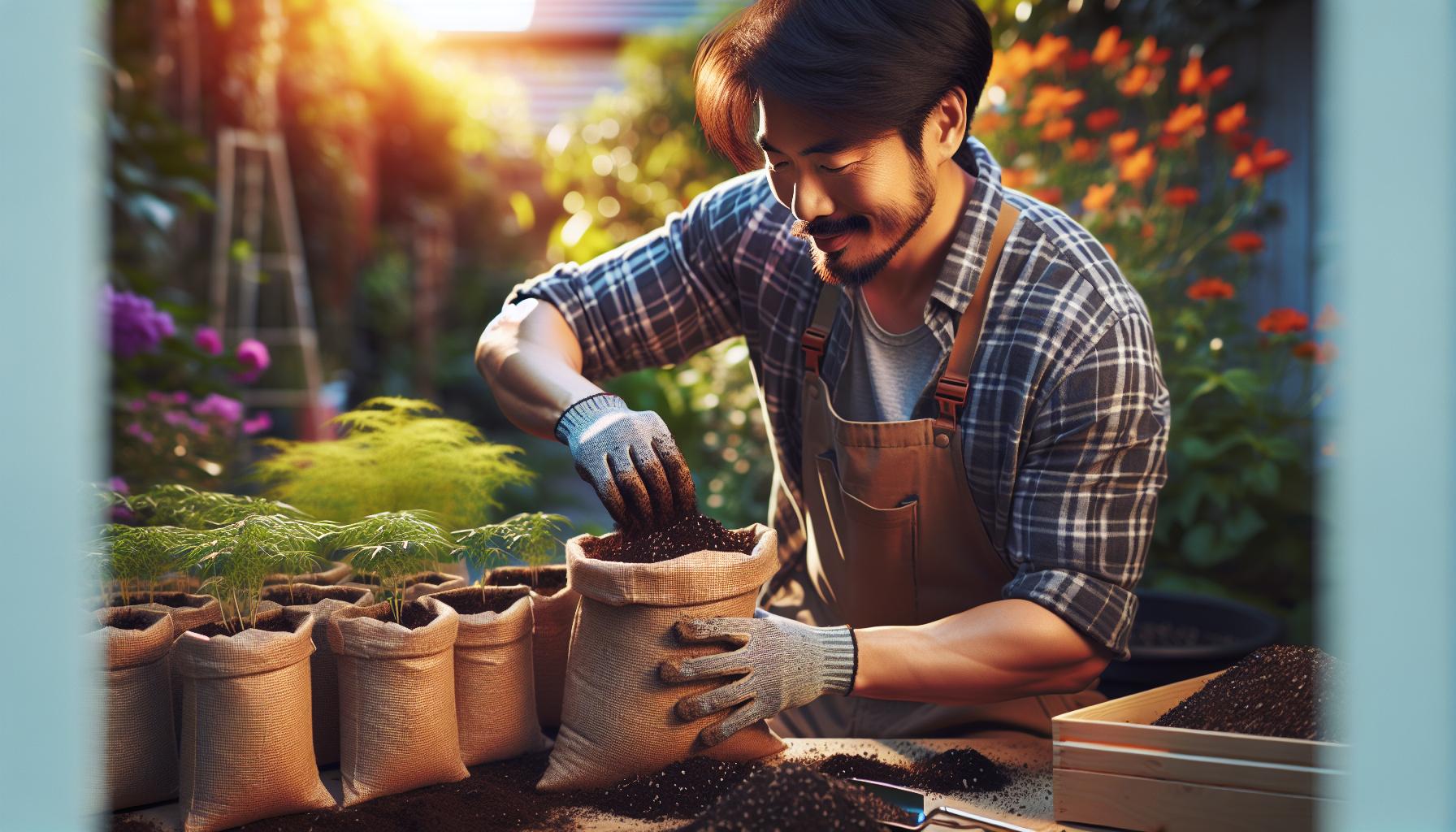Phone:
(701)814-6992
Physical address:
6296 Donnelly Plaza
Ratkeville, Bahamas.

As an avid gardener, I’ve discovered that grow bags are revolutionizing the way we approach container gardening. These flexible fabric containers have become increasingly popular among urban gardeners and homesteaders alike, offering a practical solution for growing plants in limited spaces.
I’m excited to share how these lightweight alternatives to traditional pots can transform your gardening experience. Whether you’re growing tomatoes on a balcony or creating a full vegetable garden in your backyard, grow bags provide excellent drainage, promote healthy root systems, and prevent plants from becoming root-bound – a common issue with conventional containers.
Garden grow bags are fabric containers made from breathable materials designed specifically for growing plants. These portable planting containers range from 1 to 200 gallons in capacity to accommodate various plants.
Grow bags consist of non-woven polypropylene fabric or BPA-free felt materials. The double-stitched construction features reinforced seams with industrial-grade threading to prevent tearing. Common materials include:
Grow bags come in standardized dimensions to match specific plant requirements:
| Size (Gallons) | Best For | Root Depth (inches) |
|---|---|---|
| 1-3 | Herbs | 6-8 |
| 5-7 | Lettuce | 8-10 |
| 10-15 | Tomatoes | 12-14 |
| 20-30 | Potatoes | 14-16 |
| 50+ | Trees | 18+ |
Each size includes handles for mobility plus drainage holes at the bottom to prevent water logging. The depth measurements accommodate root systems while maintaining proper aeration through the fabric walls.

Grow bags provide significant advantages for both novice and experienced gardeners. Their unique design and materials create optimal growing conditions for plants while offering practical solutions for various gardening challenges.
Grow bags promote air pruning of roots through their porous fabric construction. When roots reach the bag’s sides, contact with air naturally prunes them, preventing root circling and encouraging the development of dense, fibrous root systems. This natural root management system creates healthier plants with improved nutrient uptake capacity compared to traditional plastic containers.
The breathable fabric of grow bags enables superior water drainage control. Excess water escapes through both the drainage holes and the fabric itself, maintaining optimal soil moisture levels. The porous material allows oxygen to reach the root zone from all directions, creating these key benefits:

Grow bags accommodate a wide variety of plants with different root systems depths. The flexible fabric containers create ideal growing conditions for numerous vegetables herbs flowers through enhanced aeration drainage.
Several vegetables excel in grow bag environments:
| Vegetable | Grow Bag Size | Plants per Bag | Root Depth |
|---|---|---|---|
| Tomatoes | 15-20 gallon | 1-2 | 12-24 inches |
| Potatoes | 20 gallon | 2-3 | 12-18 inches |
| Peppers | 5 gallon | 1-2 | 12-18 inches |
| Eggplants | 7-10 gallon | 1 | 18-24 inches |
| Bush Beans | 5 gallon | 3-4 | 8-12 inches |
| Cucumbers | 10 gallon | 2 | 12-18 inches |
| Lettuce | 3-5 gallon | 4-6 | 4-6 inches |
| Plant Type | Grow Bag Size | Plants per Bag | Growing Season |
|---|---|---|---|
| Basil | 3 gallon | 3-4 | Spring-Fall |
| Mint | 5 gallon | 1-2 | Year-round |
| Marigolds | 5 gallon | 3-4 | Spring-Fall |
| Lavender | 7 gallon | 1-2 | Spring-Summer |
| Chamomile | 3 gallon | 2-3 | Spring-Fall |
| Nasturtiums | 5 gallon | 2-3 | Spring-Fall |
| Sunflowers | 7 gallon | 1-2 | Summer |

Setting up grow bags requires attention to specific details for optimal plant growth. The process starts with selecting the right soil mix and implementing proper watering techniques.
A well-draining potting mix creates the foundation for successful grow bag gardening. I use a mixture containing:
The soil mix components affect plant performance in grow bags:
| Component | Purpose | Percentage |
|---|---|---|
| Potting Soil | Base medium | 60% |
| Perlite/Pumice | Drainage | 20% |
| Vermiculite | Moisture retention | 10% |
| Compost | Nutrition | 10% |
Grow bags require specific watering practices due to their enhanced drainage properties:
| Climate | Frequency |
|---|---|
| Hot/Dry | 2x daily |
| Moderate | 1x daily |
| Cool/Humid | Every 2-3 days |
Growing plants in fabric containers requires attention to specific details to ensure optimal growth. Here are critical errors to avoid when using grow bags for gardening.
Selecting incorrect grow bag sizes leads to stunted plant growth and poor yields. Here are common sizing mistakes:
| Plant Type | Minimum Bag Size | Maximum Plants per Bag |
|---|---|---|
| Herbs | 3 gallons | 3-4 plants |
| Lettuce | 5 gallons | 2-3 plants |
| Tomatoes | 15-20 gallons | 1 plant |
| Peppers | 5 gallons | 1 plant |
| Potatoes | 20 gallons | 2-3 plants |
I’m confident that grow bags are a game-changing solution for gardeners of all skill levels. Their versatility mobility and root-promoting design make them an excellent choice for anyone looking to start or expand their garden.
Whether you’re working with a small balcony or a spacious backyard these fabric containers offer the perfect blend of functionality and convenience. I’ve seen firsthand how grow bags can transform challenging spaces into thriving gardens.
Ready to start your grow bag garden? Remember to choose the right size match your plants’ needs and maintain proper watering practices. With these tips in mind you’ll be well on your way to a successful growing season.